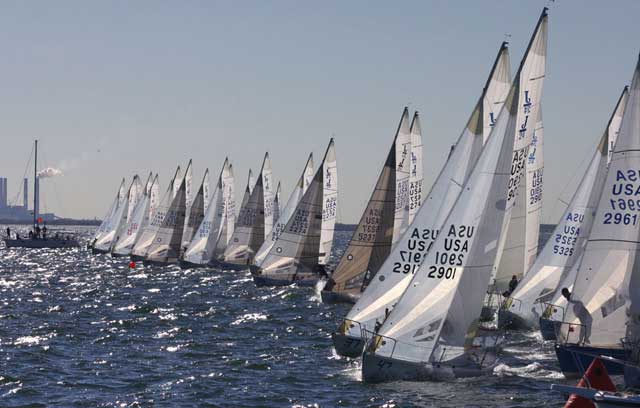It’s make or break time out on the racecourse, MARK RUSHALL explains how to get a flying start and what to do when things don’t go quite to plan.
When the race officer sounds the starting signal for the Sunday race at Daydreamers YC, he can already see which boats are going to compete in the leading pack, which will be fighting with the mid fleet masses, and which crews will consider a recovery to the mid fleet a success. For most racers, the first five minutes set the agenda for the entire race. Yet, unlike sprinters or tennis players, who spend hours and days practising starting and serving techniques, most of us are content with the 15 minutes or so starting practice we get each weekend in our local club races, compared with the three hours course-racing practice which inevitably follows each start. We all experience elements of a bad start from time to time: no space to leeward so no opportunity to accelerate without being lee-bowed; blanketed by boats to windward; starting at the unfavoured end and seeing the fleet crossing boat lengths ahead within minutes of the start; in irons going backwards when the gun goes; or simply being pinned on starboard tack unable to follow any pre set strategy. Worse still, sticking out from the crowd in the event of a black flag or individual recall. Consistently good starters avoid these dangers by applying a mix of skills. Many are class specific: the fastest way to learn is by watching your class expert. Sadly these skills can’t be learned simply from reading. They have to be learned just the same way the expert learned them – through time on the water.
Strategic Awareness when Sailing
A clear race strategy leads to a definite starting objective. [Strategies for the beat were discussed in the December 2002 issue of Y&Y.] A starting objective enables realistic priorities to be set; rather than trying to win the start outright we might aim for a more conservative approach, which achieves these priorities. For example, in light conditions the top priority for a keelboat is generally speed off the line, while in a dinghy it’s clear wind. If there is a wind bend favouring the right hand side of the course, the priority will be a clear lane to tack onto port.
How handle the boat
Practising some specific boat handling skills will enable you to accurately position the boat on the start line: • Stop quickly by pushing out the boom, keeping the boat’s alignment constant. • Learn to manoeuvre at slow speed, using sails and body weight. • Practice holding the boat on station in semi-stalled mode; (between close hauled and head to wind) using rudder and sails; maintaining control all the time. Try bearing away fast without acceleration, then promptly returning to semi-stalled mode. • Learn to tack when in semi-stalled mode, using body movement and sails, without gaining forward momentum. • Accelerate quickly from semi-stalled mode.
You can read the rest of the article on Yachts and Yachting here.
